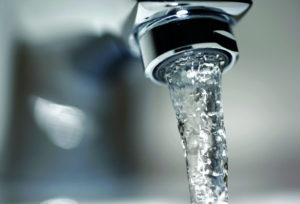 It’s easy to take water for granted. For those of us that tap water seems to be an established fact, look around. There are many places in the world not excluding USA, where clean drinking water simply isn’t available especially during periods of drought. It’s our responsibility to learn environmentally friendly practices to conserve water at home.
It’s easy to take water for granted. For those of us that tap water seems to be an established fact, look around. There are many places in the world not excluding USA, where clean drinking water simply isn’t available especially during periods of drought. It’s our responsibility to learn environmentally friendly practices to conserve water at home.
You can print and pin this list on the wall to get started!
1. Hidden Leaks
Check for hidden leaks. Even small leaks at faucets, toilets and tubs increase water usage. Finding and fixing leaks conserves water and lowers your water bill. Even a small drip can add up to 20 gallons of water over the course of a day. Look inside your home and out, as outdoor faucets and garden hoses can leak too.
2. Flush less
Each flush of the toilet uses 1.5 to 5 gallons of water. While you should absolutely flush after a visit to the restroom, don’t use your toilet to randomly dispose of insects, cigarette butts and other small unwanted items.
3. Go low flow.
Low flow shower heads and faucets use significantly less water than others. Modern low flow units are designed to reduce water consumption without reducing water pressure. You can also opt for a low flow toilet or place an empty bottle in the toilet tank to prevent it from filling all the way. This is an affordable alternative to buying a new low flow toilet and reuses an empty container, both of which are environmentally friendly practices.
4. Insulate your pipes
Pipe insulation is slit on the side for easy installation and helps keep your pipes warm. This practice allows you to get hot water to your faucets more quickly so you need not run the water while waiting for it to get hot. This will save on your energy bills as well. Just do it!
5. Take shorter showers
Four minutes of shower time consumes 20 to 40 gallons of water. Short showers result in significant water conservation. What’s your minimum necessary?
6. Fill ‘er up
Run your washing machine and dishwasher only when they are full. Small loads use just as much water, so run these appliances only when they are full. If it’s time to replace your washing machine, do so wit an energy efficient model that weighs the load and adjusts water usage accordingly.
7. Wash and shave responsibly
You’ll save surprising amounts of water by filling the sink with a bit of rinse water when you wash your dishes or shave rather than letting the water run while you work. Rinse water can always be changed if it gets too dirty, so fill the sink with the minimum amount of water needed to perform your task and then change it if necessary. Apply this concept when washing vegetables and performing other tasks such as when you purify water, where you notice yourself leaving the tap open. Remember, too, to turn the water off after wetting your toothbrush.
8. Go native in the garden
Whenever possible, avoid the need to water your lawn and garden by planting native grasses and plants. Native plants have evolved in a way that allows them to thrive in your area’s natural environment and rainfall levels. When you must water, soak the soil once a week rather than watering for frequent short periods and avoid irrigating on windy days or during the hot part of the afternoon. Collect and irrigate with rainwater if it is legal to do so in your area.
9. Keep a pitcher and ice cubes at the ready
Placing a full pitcher of water in the fridge allows you to enjoy a refreshing glass of cold water without running the tap while waiting for the water to get a little colder. Ice cubes, too, will help you get cold water quickly even if the water coming out of the tap isn’t chilly right away.
10. Find and visit environmentally friendly car wash
The water you use washing your car in your driveway simply runs down the street and into the sewer system. Many car washes, however, collect and recycle the water used to wash cars, which is a much more efficient system.
Whether you implement all 10 of these tips or just a few, every little bit you do helps. Choose a few water saving practices that you think would be easy for you and start saving water today.







![Best Crochet Hooks for Beginners and Pros [2020 Update] best crochet books](https://www.awebtoknow.com/wp-content/uploads/2018/01/best-crochet-books-100x70.jpg)